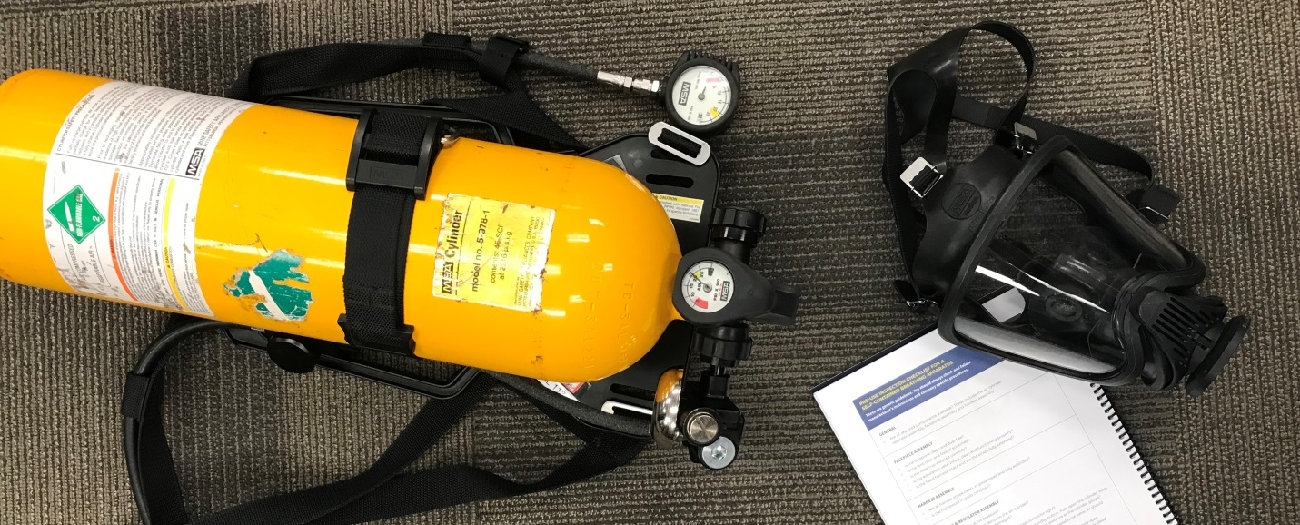A first-timer’s journey into the world of sour gas preparedness
Alberta - September 03, 2019On any given workday, you'll find me in the comfort of my cubicle, researching best regulatory practices and sharing what I learn with decision makers at the Alberta Energy Regulator (AER). This work is safe; the only hazard I face is the vengeance of my notebook, which might lash out and leave a papercut.
Unlike AER inspectors out in the field, I face few gas hazards at work. While the slight stench of rotting eggs might linger in the recirculated office air, I'm confident that smell is coming from the kitchen down the hall. The risk of hydrogen sulfide (H2S), which can be deadly in high concentrations, exposure is virtually non-existent.
But when you're in a desk job like mine, you jump at the opportunity to visit the field. I did most recently when one of my leaders asked me to visit our Wainwright field centre to write an article for Resource.
Then she said: "The sites are sour. Do you have H2S training?"
No, I admitted, I did not.
"Can you get it?"
And that's how I found myself in Energy Safety Canada's H2S Alive course, reading the syllabus and wondering what could be meant by "demonstrate dragging techniques." (Spoiler alert: it involves human bodies.)
H2S Alive training is for any worker who may be exposed to H2S or other hazardous, oxygen-deficient atmospheres on the job. I was one of 20 participants in my session—and one of few who had never taken it. Successfully completing the practical exercises and written exam earns you a certificate that is valid for three years; most of my fellow students were due for a renewal.
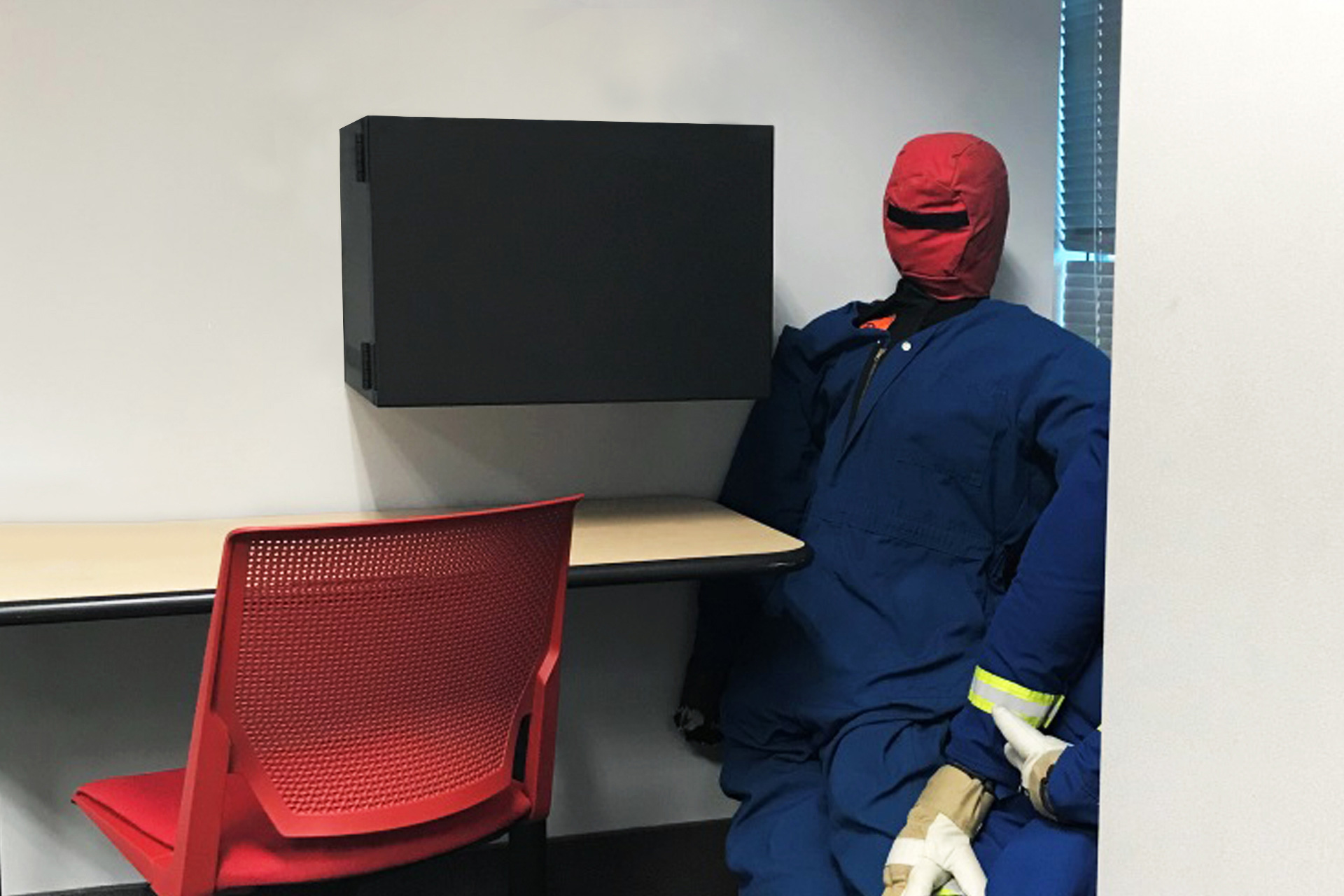
The course is supervised by trained instructors, usually experts in firefighting or oil and gas, as well as weighted dummies.
Unlike the terrifying dummies seated behind me, the instructors were friendly and approachable. Many have taught the course for years, have firefighting or oil and gas backgrounds, and are well versed in responding to H2S related events.
"Each person must understand their obligation and responsibilities as they relate to working alone and refusing unsafe work,"" my instructors reinforced.
Talkin' Serious Stuff
First, we discussed hazard assessments for various scenarios, health and safety hazards associated with each task, and suggestions on how to either eliminate or control each hazard. Later in the day, we would revisit these scenarios and use them to plan our response in the event of an emergency
Because H2S poses a great and immediate threat on some energy sites, we also got up and moving, demonstrating our ability to protect ourselves and others should an emergency arise.
We learned to don and doff a self-contained breathing apparatus. I initially stared at the mask with paralyzing fear, thinking, "I can't even snorkel, how will I put this on and pass the test?" But I realized that my nervousness paled in comparison to the gravity of any scenario where one would require the equipment.
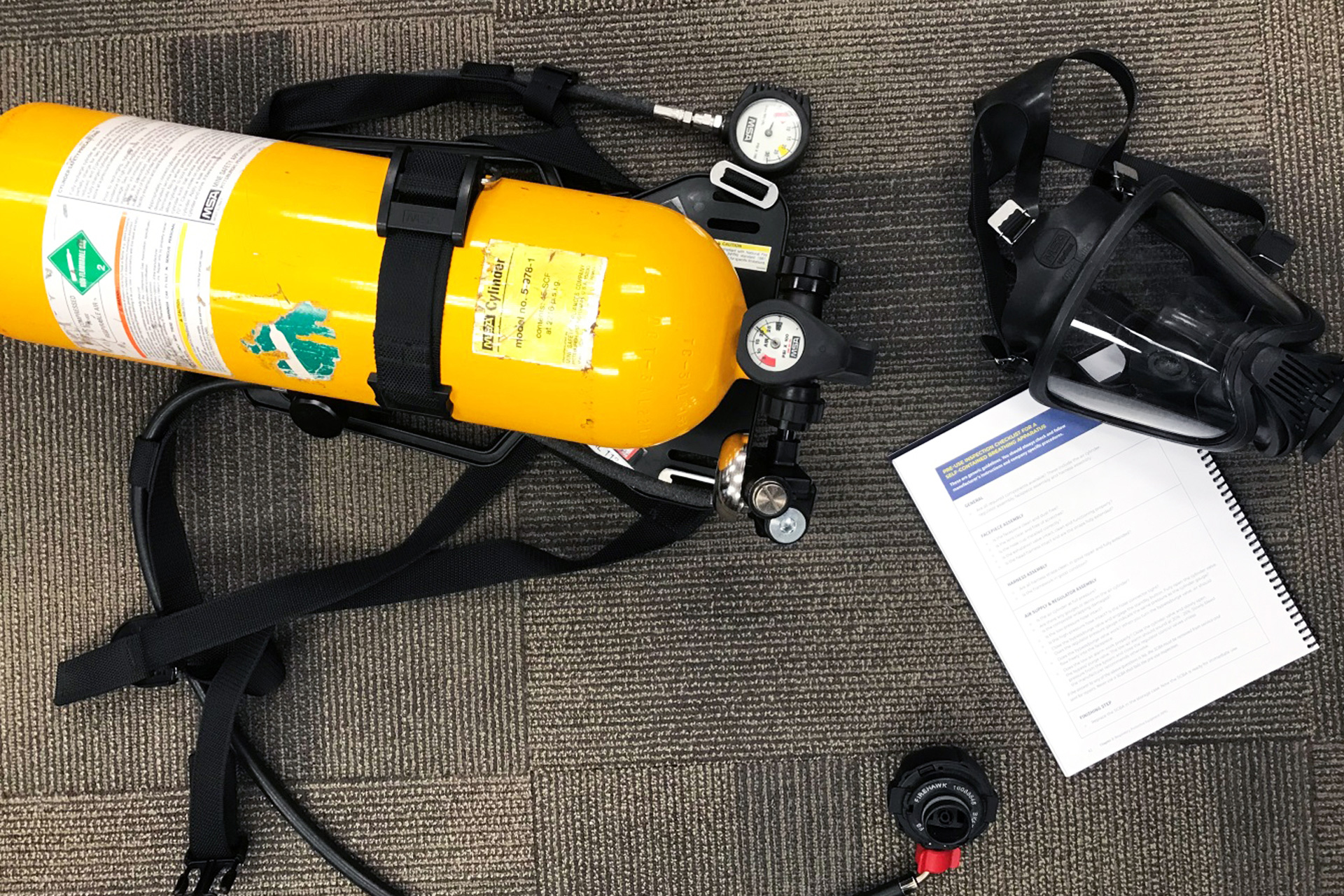
A Self-Contained Breathing Apparatus (SCBA) and a pre-use inspection checklist. To complete H2S Alive, you must demonstrate that you can wear this large air supply tank and mask and can check the flow of air.
We Dragged On
Next up, we practiced our dragging techniques. If someone is exposed to enough H2S that they lose oxygen and can't evacuate the scene, I learned that I might need to rescue them. And by that, I mean drag or carry them to safety.
We practiced five drag techniques using life-sized, human-weighted dummies. One tip I'd pass on to newcomers is to lift with your legs, which gets weight off of the ground and into your arms more easily.
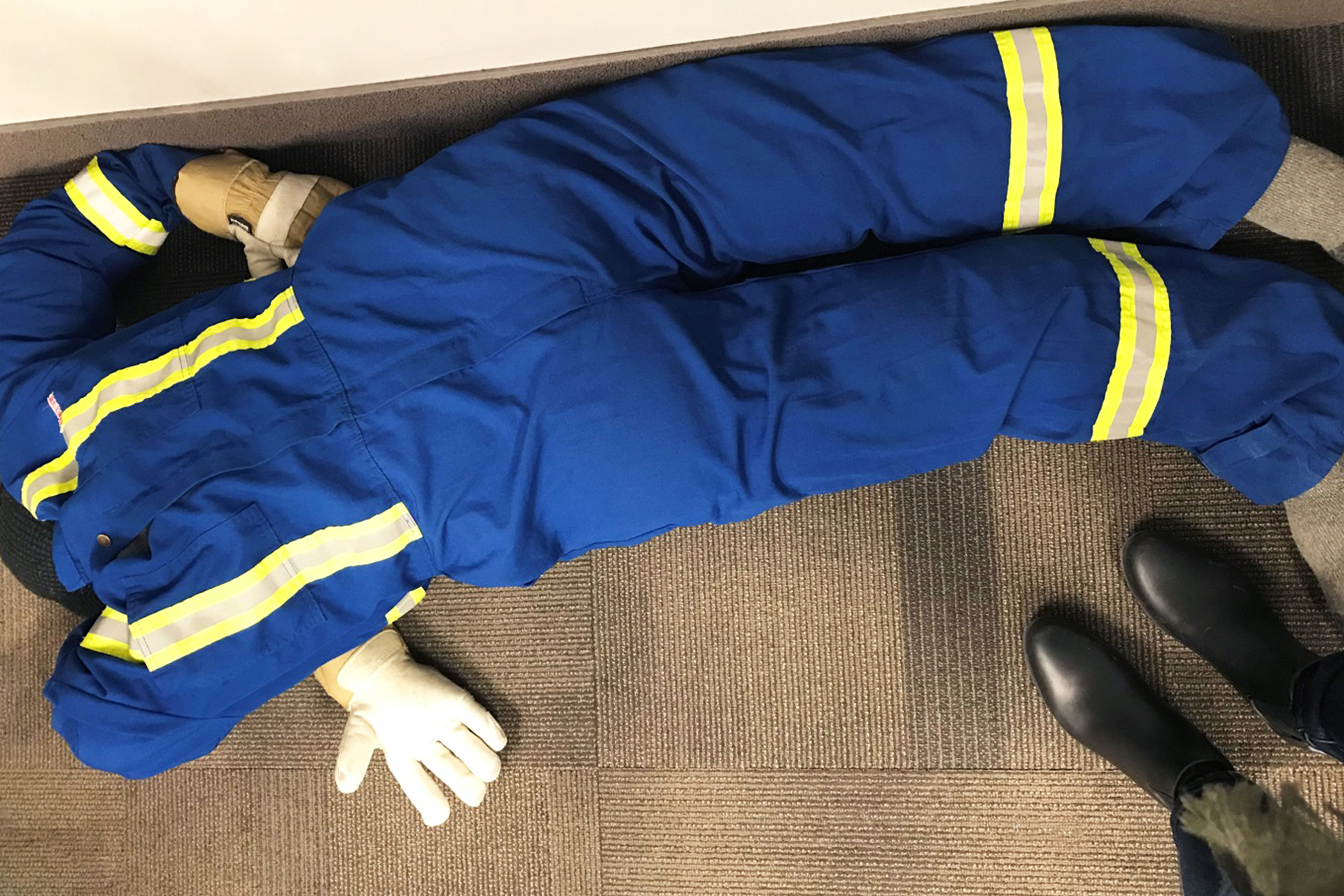
I dragged this poor, headless soul across the room using five techniques: the collar drag, one-arm drag, two-arm drag, two-rescuer drag, and two-rescuer carry.
Put Down Your Pencils
Tired from the exercise component of the course, we debriefed the day and prepared for our written exam. We were given one hour to complete 25 questions. The time flew by—especially for my returning peers, many of whom finished successfully and were out the door within 10 minutes.
And since passing the exam myself, I am now confident in my ability to protect myself and others in the event of an H2S release.
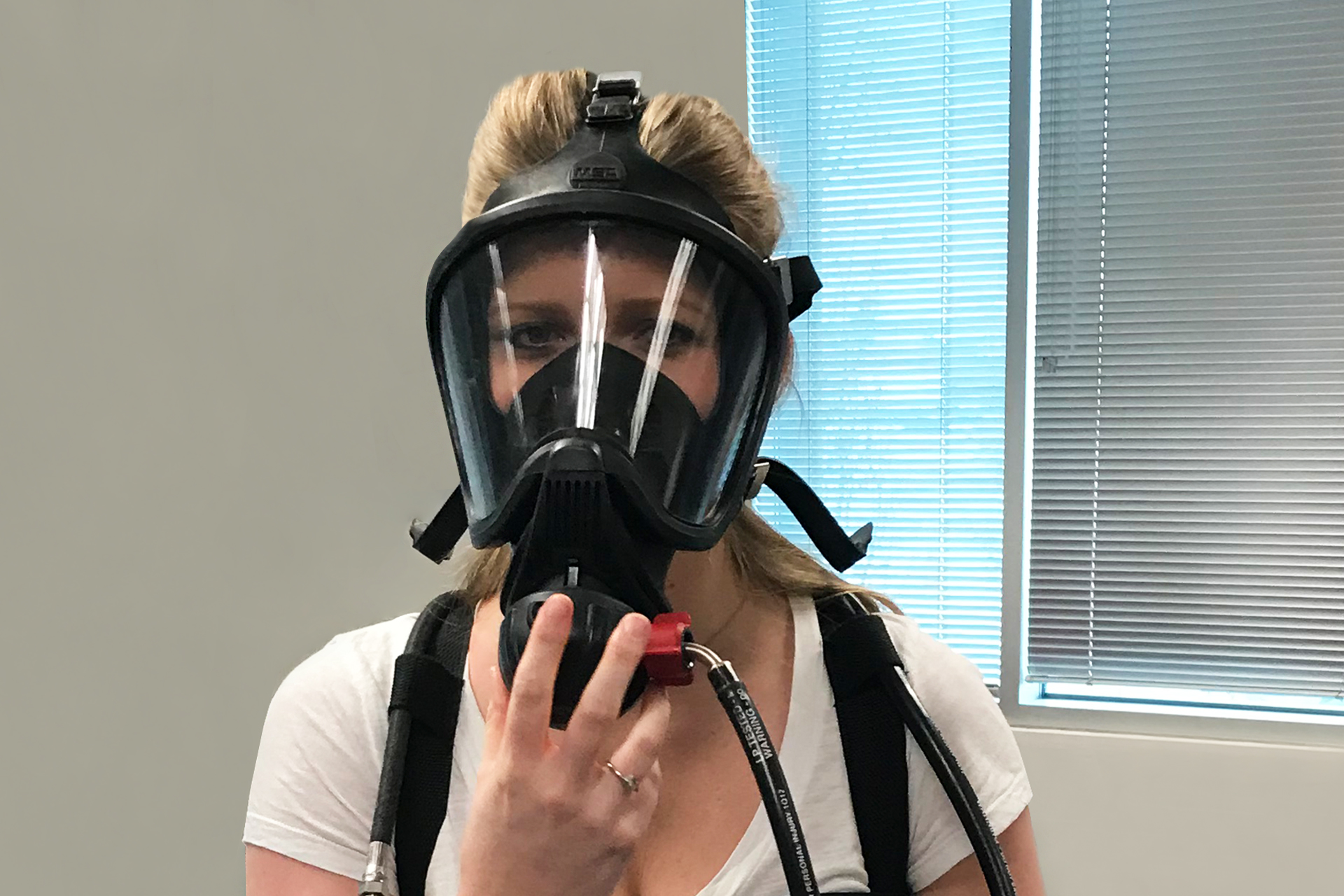
I took a deep breath of air upon donning my SCBA, definitely not feeling any sort of anxiety…or claustrophobia.
Brittany Elves, Writer


